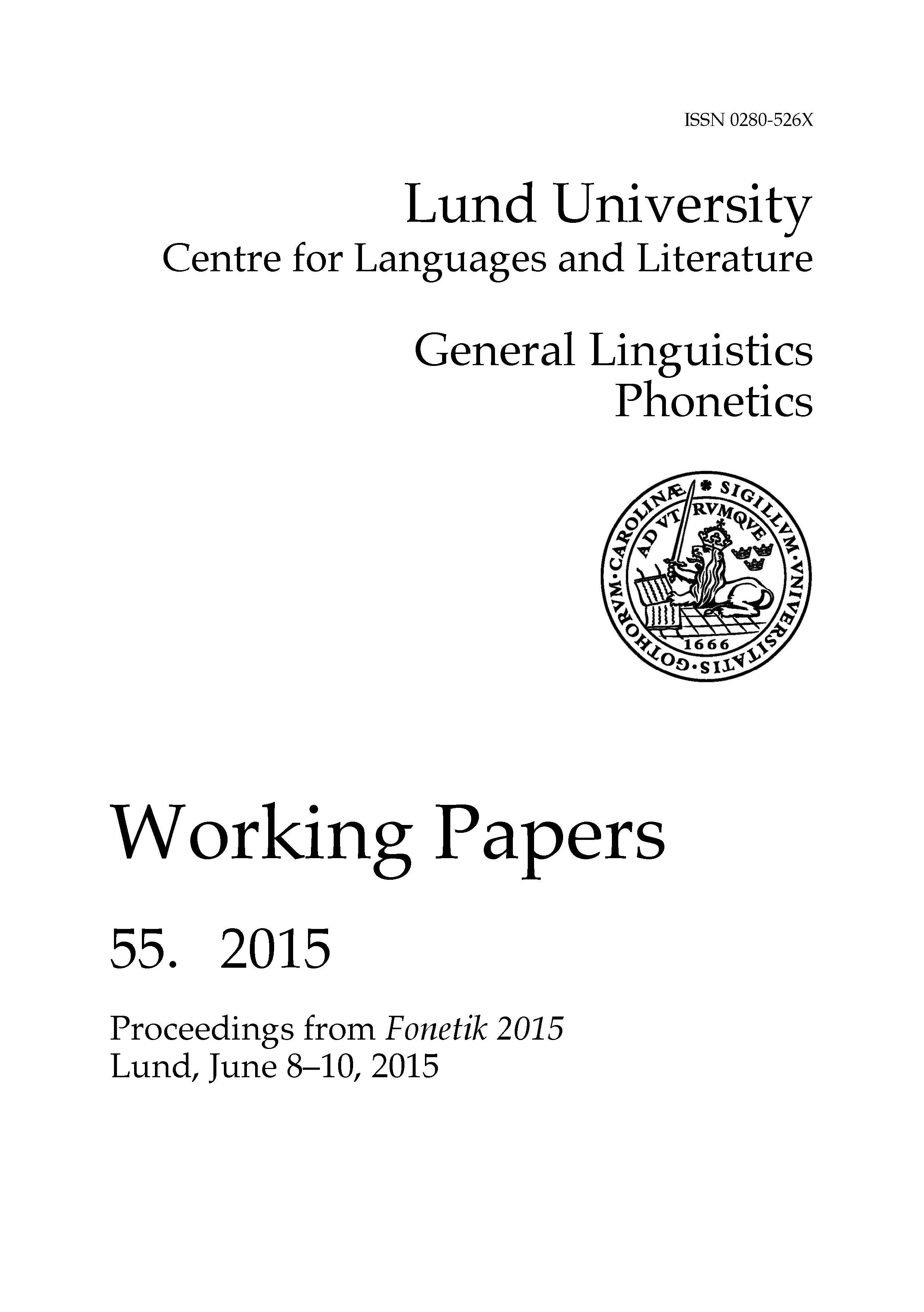Multimodal levels of prominence
a preliminary analysis of head and eyebrow movements in Swedish news broadcasts
Abstract
This paper presents a first analysis of the distribution of head and eyebrow movements as a function of (a) phonological prominence levels (focal, non-focal) and (b) word accent (Accent 1, Accent 2) in Swedish news broadcasts. Our corpus consists of 31 brief news readings, comprising speech from four speakers and 986 words in total. A head movement was annotated for 229 (23.2%) of the words, while eyebrow movements occurred much more sparsely (67 cases or 6.8%). Results of χ2-tests revealed a dependency of the distribution of movements on the one hand and focal accents on the other, while no systematic effect of the word accent type was found. However, there was an effect of the word accent type on the annotation of ‘double’ head movements. These occurred very sparsely, and predominantly in connection with focally accented compounds (Accent 2), which are characterized by two lexical stresses. Overall, our results suggests that head beats might have a closer association with phonological prosodic structure, while eyebrow movements might be more restricted to higher-level prominence and information-structure coding. Hence, head and eyebrow movements can represent two quite different modalities of prominence cuing, both from a formal and functional point of view, rather than just being cumulative prominence markers.


